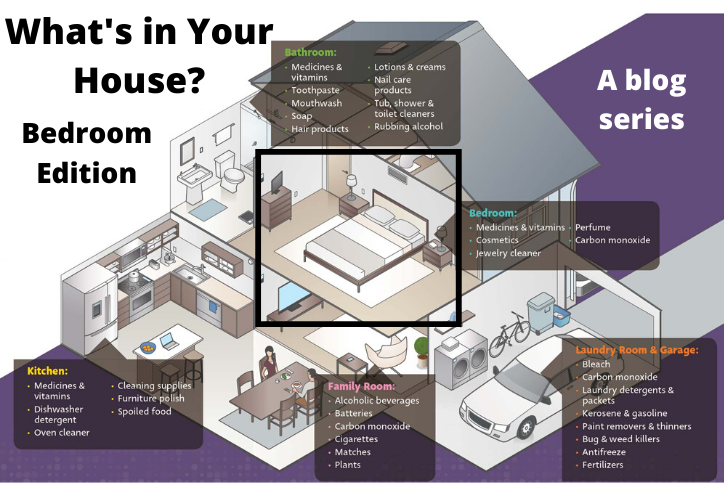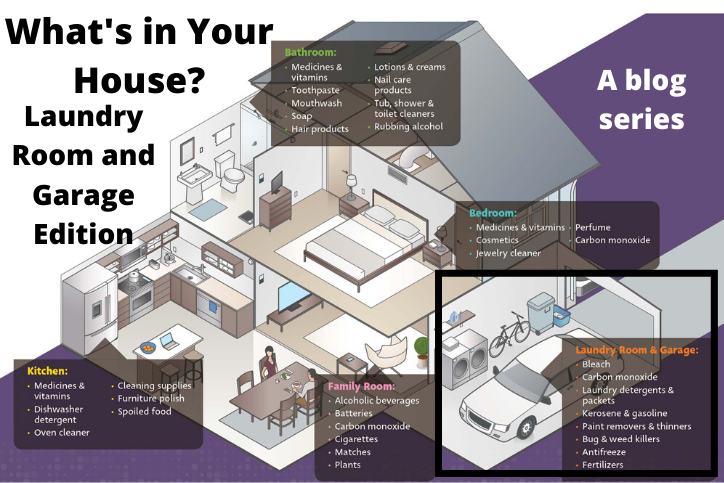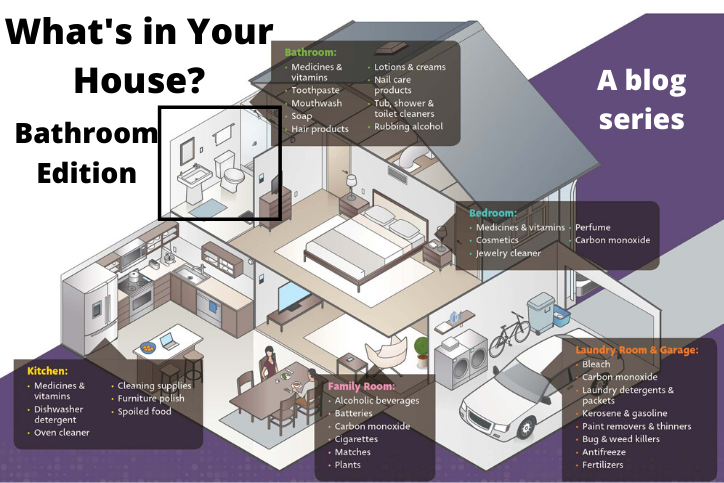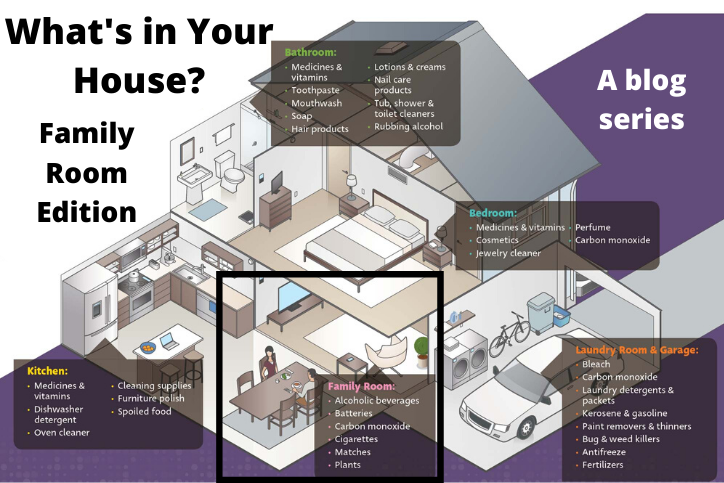What makes a house a home? Some may say the people in it. Others may say the things inside of it. No matter your opinion, we all take steps to make our houses feel more “home-y,” which should include safety. Whether you spend the whole day at home, or just a few hours, you want to make sure it is a safe place for you and your family to enjoy.
With that thought in mind, we welcome you to the fourth edition of our home safety series. More than 90% of poisonings happen in the home. This series takes a closer look at some of the poison hazards that you might find in different rooms in your house. Below, we focus on the bedroom. Keep an eye out for these potential poisons, and make sure you use and store them safely.
Medicines and Vitamins
Safe Use: Read the label every time medicine is used and follow the directions about when, how, and how much to take. Pay close attention to the warnings section of the label to learn about possible drug interactions and help prevent unwanted side effects. If you are taking multiple medicines, check the labels for overlapping ingredients. Taking too much of one active ingredient can lead to an overdose. Check with your doctor about vitamins and supplements before taking them, as they can interact with other medicines you take. Keep a current list of all medicines and vitamins you take and bring it with you to medical appointments. Download our easy-to-use medicine tracker.
Safe Storage: The best way to prevent medicine and vitamin mishaps is to keep these items up, away, and out of sight. Ideally, they should be kept in their original containers. Don’t leave medicines on or in the drawer of nightstands, as those places are easily accessible to children. Daily pill minders are helpful if you take multiple medicines or different medicines at different times, but they are not child resistant. If you have children in your home, make sure you keep those containers up, away, and out of sight as well. If you have visitors, offer them a place to safely store their belongings, including their medicines. Regularly dispose of unused and expired medicines, as they can put children, teens, adults, older adults, and pets at risk. A list of permanent drop-off locations is available here. The Drug Enforcement Agency (DEA) also offers two Take Back Days each year to help people safely dispose of their medications, usually in October and April. Simple instructions for home disposal are available here.
Carbon Monoxide
Carbon Monoxide is a colorless and odorless gas caused by the incomplete burning of fuel. People who live in homes with gas heat are at risk for carbon monoxide poisoning. One way to prevent a carbon monoxide exposure is to install a carbon monoxide alarm around the area where the bedrooms are located to ensure you will hear it if you are sleeping.
Cosmetics
Safe Use: The number one exposure for children is cosmetics and personal care products. Children are often exposed to cosmetics through easy access and by imitating adult behavior. When they start playing with makeup, they don’t always use it correctly and can end up with lipstick or nail polish all over their faces, which can increase their risk of experiencing an unwanted effect or unintentionally consuming the product.
Safe Storage: We often get calls to the poison center about children who have taken a taste of a favorite lipstick, blush, or foundation. Although it is convenient to keep these items within easy reach for your morning routine, placing these items up, away, and out of sight can help ensure your children (and makeup) stay safe.
Jewelry Cleaner
Safe Use: It’s important to closely follow the directions on the jewelry cleaner label. Be careful not to splash the cleaner into your eyes. These cleaners can contain ingredients such as ammonia, rubbing alcohol, and soap, which can irritate the eyes, mouth, and throat. While soaking jewelry, don’t leave the container within a child’s reach. If any product gets in the eyes or mouth, call the poison center.
Safe Storage: These products should be kept up, away, and out of sight. The packaging and scent of the cleaner may be attractive to children.
Perfume
Safe Use: When using, ensure the spray opening is not directed at your face. Put the cap on after use to help keep children from spraying it everywhere. Perfumes can contain up to 50% alcohol. Perfume bottles can have colorful art and pictures of food or flowers on them, which can attract children.
Safe Storage: Keep perfumes up, away, and out of sight from children.
These are the common items to look out for in your bedroom to help make the area a safe space for family and guests. If you think someone has ingested or been exposed to any of the above products, call the poison center right away at 1-800-222-1222. Pharmacists and nurses will determine what steps you need to take. Do not wait for symptoms! And, be sure to come back over the next few months to learn about poison dangers in other rooms and how to make those spaces poison safe.





Leave a Reply